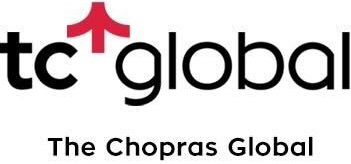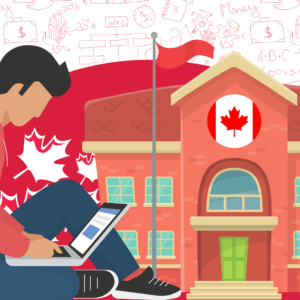Learning, till now, has largely followed a one-size-fits-all approach. There’s a teacher who addresses a large group of assorted learners – who may vary in terms of their intellectual abilities and, thus, benefit differently from the same lesson.
Ed-tech is changing that. Learning is becoming more personalized and customized to learners’ needs – something that the online medium is making possible.
How beneficial would that be and why should people consider it?
We look at personalising learning to its optimum here – taking into account individual passions, market requirements, scheduling issues, types of classes, teaching and learning methodologies to create an educational sweet spot that can distinguish your professional portfolio from those of others.
As in any other field, instructional methodologies and teaching practices evolve with time; they cannot remain stagnant. One of the more recent developments in this arena is that of personalised learning. Millennial trends in pedagogy emphasise more on the individuality of learners and argue that ‘a one size fits all’ notion cannot be applied if effective learning is the goal.
The National Educational Technology Plan: Future Ready Learning: Reimagining the Role of Technology in Education (NETP), 2016 and the 2017 NETP Update, policy documents for ed-tech from the US Department of Education attempted to define personalised learning:
Personalised learning refers to instruction in which the pace of learning and the instructional approach are optimised for the needs of each learner. Learning objectives, instructional approaches, and instructional content (and its sequencing) may all vary based on learner needs. In addition, learning activities are made available that are meaningful and relevant to learners, driven by their interests, and often self-initiated.
However, practicing personalised learning in traditional learning centers has always encountered obstacles, including space constraints and unavailability of facilitators. Call it a silver lining, for, the pandemic and the subsequent expansion of online education models have given us an opportunity to individualise our learning plans.
It begins at the larger goal. All of your tweaks to your learning plan ultimately need to contribute to your endgame. With the different types of online courses that are available, you can stagger them to fit your schedule. Take all the advantages Ed-Tech can offer you. The spectrum of ideas that comprise personalised learning ranges from personalisation that has been done for you all the way to personalisation done by you, as defined by UK educationalist Dan Buckley. Our emphasis here is on the second kind: the personalisation you can do for yourself.
Ignoring the pseudo-spiritual overture, what we mean is creating a learner’s profile. Before you jump into the deep end of personalisation, take some time to define what kind of a learner you are, your interests, motivations and so forth. This process also includes formulating a timeline, giving yourself reasonable short-term goals to keep track of progress. Any choice made from this point onwards needs to fall within the ambit of your ultimate goal and your learning preferences.
Plenty of choices means plenty of research. The world of online learning is vast and multifaceted. When you are researching for courses, you will need to look at the type and the content of the courses.
Type: Your options begin with the MOOCs (Massive Online Open Courses) as offered by major ed-tech firms such as Coursera, EdX, Udemy, Udacity, and many more. A MOOC gives you the most flexibility. The courses are already uploaded online and you can take them at your convenience. It also becomes your responsibility to verify the validity and relevance of your course. Successful learning from MOOC depends entirely on your motivation and participation, the chances of you interacting with your peers and your facilitators are minimal. On the other hand, if you learn better with discussions and a classroom setup, look for blended learning programs for, it is an average of online self-learning and face-to-face learning, whether it happens in the real world or the virtual one.
Content: Interdisciplinarity is the order of the day. Specialising in a linear fashion, going deeper into the depths of the same field still carries value, but it does not help you distinguish yourself.
To illustrate, the value of STEAM has superseded that of STEM. By combining the liberal arts and humanities with science, technology, engineering, and math, you can offer more to prospective employers or business models. It has even become a running joke in academia: STEM without Humanities is how one creates Spider-Man villains. Diversifying your learning is integral and can be easily achieved with a personalised learning design when compared to a traditional setup.
Now, you have your overall goal, your learning profile and the research that supports your choice of courses. The next step is incorporate these choices into your schedules and make them part of your everyday. There are a few ways through which you can do that, besides gluing yourself in front of your computer.
An idea that migrated from the corporate world into education, Genius Hour is a time for learners to explore their own passions and hone professional skills that they are proud of. Drive, a bestseller by Daniel Pink illustrates how this movement began with those working with Google. Each individual is given an hour a week to work on new ideas or master new skills. “They ’ve used that precious sliver of autonomy well, coming up with a range of innovations including training tools for other branches”, writes Pink.
In learning, giving yourself this hour shows a direct, positive impact on your motivation and confidence levels for, it is an overt representation of your autonomy as a learner. In Genius Hour, deadlines are minimal and the emphasis is on creativity. You give yourself a project that you are impassioned by and continue to work on it until you think it is complete. This project may or may not be directly associated with your other learning plans. You give yourself approximately an hour a week or how much your schedule will allow and return to it every week.
Genius Hour can work as positive reinforcement and get your creative juices flowing. If your project is connected to your larger learning goals, you will see a noticeable spike in your learning and assimilation. Even if it is disconnected from your overall goal, it gives your brain an opportunity to reset and return to your learning with renewed vigour.
Attribute it to the anxieties of the pandemic or dependence on technology, there is an imminent need to reassess our attention spans. Generalising this quotient or averaging it out is not going to help anyone. Ideally, it is something you evaluate when you create your learning profile. Depending on your requirements, you navigate between conventional courses that go on for about an hour per session and bite-sized modules that deal with topics in chewable nuggets. Typically, a bite-sized module lasts ten minutes. It is not random fragments of a large topic but a well-researched practice in microlearning that still equips the learner to complete a task in its entirety.
Bite-sized learning is not suited for all subject matters for some disciplines need to be accessed in their entirety and complexity. However, some standalone topics, associated topics such as soft skills, compliance or safety, or even on-the-job-training can be accessed with bite-sized modules, creating a more flexible schedule.
Make learning fun for yourself. By gamifying your learning you are giving yourself the scope to experience victory which will push you further to scale greater heights. Healthy forms of competition can optimise your learning and make them more enjoyable. Do check out our article on Gamification to delve deeper into this idea.
This process seems long and arduous. “Instead of spending so much time figuring all this out, I might as well finish a course.” It is absolutely normal to have this thought. But tell yourself that it is a one-time process. A process, when invested a little time in, can optimise your learning for the foreseeable future. The pandemic has changed the world inconceivably. It is impossible to guess when we will go back to our previous state of normalcy or if we will go back at all, and online learning is here to stay. And as long as online education and ed-tech rule the roost, it is certainly worth it to create a personalised study plan for yourself. Happy learning!



![MBA in UK for Indian Students: Best Colleges & Universities [2024]](https://tcglobal.com/wp-content/uploads/2023/02/Cover-Image-8-300x300.png)


![MBA in UK for Indian Students: Best Colleges & Universities [2024]](https://tcglobal.com/wp-content/uploads/2023/02/Cover-Image-8-600x338.png)
